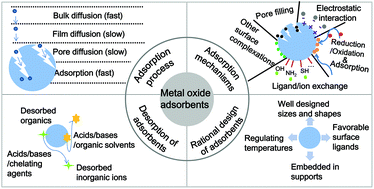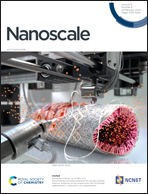Rational design, synthesis, adsorption principles and applications of metal oxide adsorbents: a review
Abstract
The shortage of water resources and increasingly serious water pollution have driven the development of high-efficiency water treatment technology. Among a variety of technologies, adsorption is widely used in environmental remediation. As a class of typical adsorbents, metal oxides have been developed for a long time and continued to attract widespread attention, since they have unique physicochemical properties, including abundant surface active sites, high chemical stability, and adjustable shape and size. In this review, the basic principles of the adsorption process will be first elucidated, including affecting factors, evaluation index, adsorption mechanisms, and common kinetic and isotherm models. Then, the adsorption properties of several typical metal oxides, and key parameters affecting the adsorption performance such as particle/pore size, morphology, functionalization and modification, supports and calcination temperature will be discussed, as well as their application in the removal of various inorganic and organic contaminants. In addition, desorption and recycling of the spent adsorbent are summarized. Finally, the future development of metal oxide based adsorbents is also discussed.

- This article is part of the themed collection: Recent Review Articles


 Please wait while we load your content...
Please wait while we load your content...